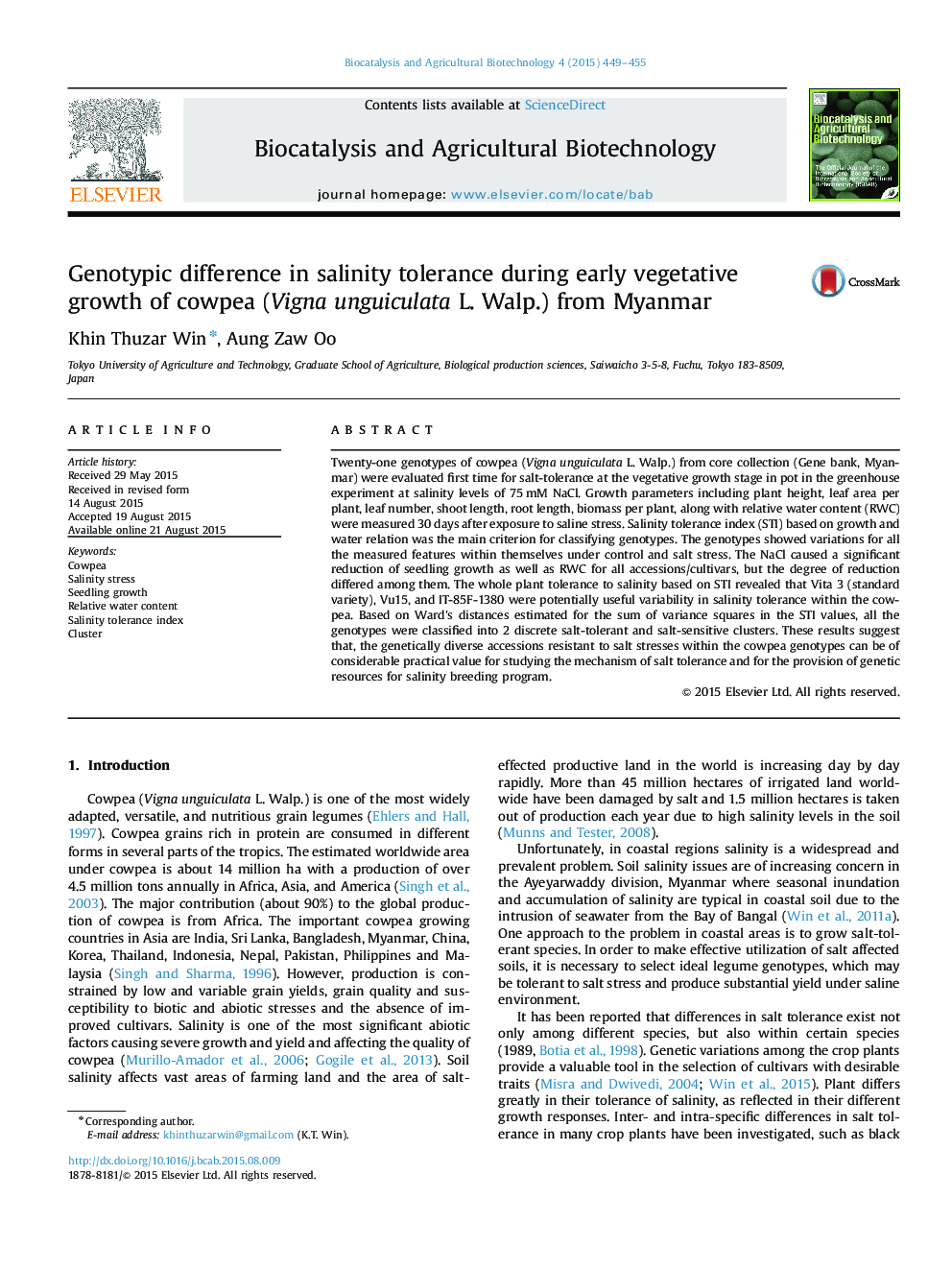| Article ID | Journal | Published Year | Pages | File Type |
|---|---|---|---|---|
| 2075292 | Biocatalysis and Agricultural Biotechnology | 2015 | 7 Pages |
Abstract
Twenty-one genotypes of cowpea (Vigna unguiculata L. Walp.) from core collection (Gene bank, Myanmar) were evaluated first time for salt-tolerance at the vegetative growth stage in pot in the greenhouse experiment at salinity levels of 75Â mM NaCl. Growth parameters including plant height, leaf area per plant, leaf number, shoot length, root length, biomass per plant, along with relative water content (RWC) were measured 30 days after exposure to saline stress. Salinity tolerance index (STI) based on growth and water relation was the main criterion for classifying genotypes. The genotypes showed variations for all the measured features within themselves under control and salt stress. The NaCl caused a significant reduction of seedling growth as well as RWC for all accessions/cultivars, but the degree of reduction differed among them. The whole plant tolerance to salinity based on STI revealed that Vita 3 (standard variety), Vu15, and IT-85F-1380 were potentially useful variability in salinity tolerance within the cowpea. Based on Ward's distances estimated for the sum of variance squares in the STI values, all the genotypes were classified into 2 discrete salt-tolerant and salt-sensitive clusters. These results suggest that, the genetically diverse accessions resistant to salt stresses within the cowpea genotypes can be of considerable practical value for studying the mechanism of salt tolerance and for the provision of genetic resources for salinity breeding program.
Related Topics
Life Sciences
Agricultural and Biological Sciences
Agricultural and Biological Sciences (General)
Authors
Khin Thuzar Win, Aung Zaw Oo,
